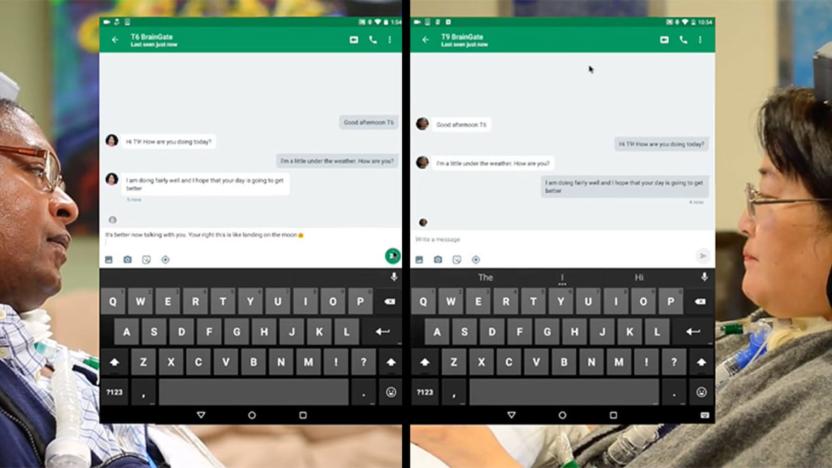BrainGate
Latest

Brain implant lets paralyzed people turn thoughts into text
Three people paralyzed from the neck down have been able to use unmodified computer tablets to text friends, browse the internet and stream music, thanks to an electrode array system called BrainGate2. The findings could have a major impact on the lives of those affected by neurologic disease, injury, or limb loss.

Paralyzed man regains use of arms thanks to 'wireless spinal cord'
Remember that paralyzed guy from Southern California who managed to walk on his own accord thanks to a revolutionary technique that bridged the gap in his severed spinal column with a wireless Bluetooth link? A team of doctors at Ohio's Case Western Reserve University have reportedly accomplished the same feat with a patient's arms.

Brain implants help the paralyzed type faster
It's possible for paralysis victims to type and otherwise communicate with the world, but they usually have to do so at a glacial pace. They might not be nearly so limited in the future, though. In experiments combining BrainGate2 (a high-speed neural implant system) with text entry software, researchers had a Lou Gehrig's sufferer type words at six words per minute. While that may not sound quick on the surface, it's incredibly fast for someone relying solely on mental activity to write a message.

BrainGate hits 1,000 day mind-control milestone, nearly three years of pointing and clicking
Aspiring Svengalis rejoice! For BrainGate has reached a significant landmark in computational thought-control -- the 4 x 4-mm implantable chip has given a woman with tetraplegia the ability to point and click with her brain for 1,000 days. An article recently published in the Journal of Neural Engineering said the woman, known simply as S3, performed two easy tasks every 24 hours, using her mind to manipulate a cursor with 90 percent accuracy. Each day she was monitored, S3 would post up in front of a computer and continuously command the thing with her thoughts for 10 minutes. Functionality reportedly deteriorated over time, but the paper points to the chip's durability, not sensor-brain incompatibility, as the culprit. Research is currently underway to incorporate BrainGate into advanced prosthetics that could get tetraplegics like S3 up and moving again. Now, how's that for the power of positive thinking?



